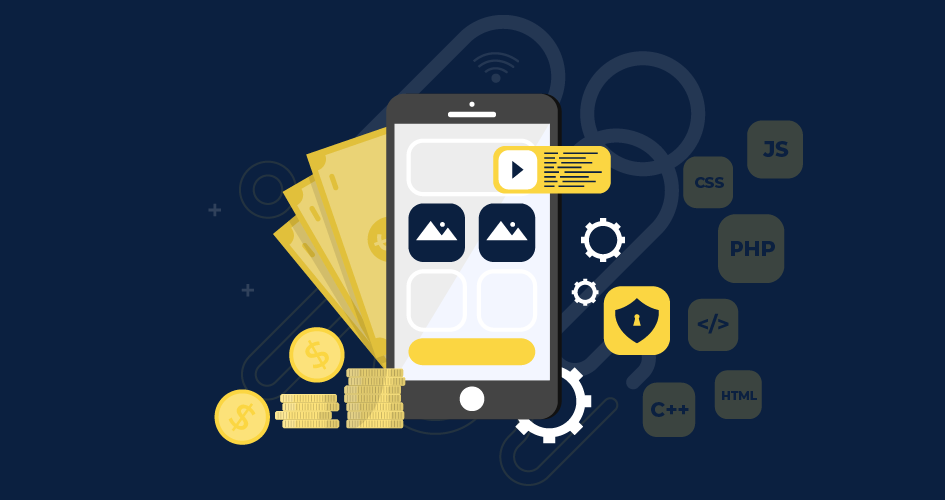Have you ever had an app idea that you wanted to bring to life, but were intimidated by the thought of coding?
You’re not alone! Many business leaders like you face this challenge.
However, with the rise of app development platforms that require little to no coding experience, building an app is now more accessible than ever before.
In this guide, we will show you how to build an application without coding, whether you’re an entrepreneur, a managing director, a business owner with a new idea, looking to expand your reach, or simply someone with a passion project.
We’ll cover the importance of defining your app idea, choosing the right platform, designing your app, building and testing it, publishing it to the app store, and maintaining it once it’s live.
By the end of this guide, you’ll have the tools and knowledge you need to turn your mobile app ideas into a reality, without having to learn how to code.
So let’s dive in and discover how you can build your own app, even if you have no coding experience.
#1. Define Your App Idea
The first step in building an app without coding is to define your app idea. You need to have a clear understanding of what your app will do and what problem it will solve.
This will help you choose the right platform and design your app effectively.
Here are some tips for defining your app idea:
- Identify the problem you want to solve
- Research the market to see if there is demand for your app
- Define your target audience
- Determine the unique features of your app
#2. Choose a Platform for Building Your Application
Once you have a clear understanding of your app idea, it’s time to choose a platform for building your app.
There are many mobile application development platforms available that require little to no coding experience.
Some popular options include:
1. Appy Pie
Appy Pie is a cloud-based app development platform that allows you to create apps for Android, iOS, and Windows platforms.
It offers a drag-and-drop interface that makes it easy to create apps without any coding knowledge.
Appy Pie offers a wide range of templates and design tools that you can use to create a custom app for your business.
Additionally, it provides features such as push notifications, in-app purchases, and analytics to help you create a robust application for your business.
2. BuildFire
BuildFire is a mobile app development platform that allows you to create apps for iOS and Android platforms.
It offers a simple drag-and-drop interface that makes it easy to create apps without any coding knowledge.
With BuildFire, you have access to a plethora of design tools and templates that can be utilized to build an app tailored to your business needs.
Alongside this, the platform offers functions like social media integration, push notifications, and analytics that enable you to create an app with a significant impact on your business.
3. Bubble
Bubble is a web application development platform that allows you to create web applications without any coding knowledge.
It offers a visual drag-and-drop interface that makes it easy to create complex web applications.
Bubble offers a lot of templates and design tools so you can create a web app that fits your business perfectly.
It also has extra features like database integration, user management, and analytics that help you build a strong web application for your business.
4. Thunkable
Thunkable is a platform that helps you build mobile apps for both iOS and Android.
With its easy-to-use drag-and-drop interface, you don’t need any coding experience to create your apps.
You can also take advantage of Thunkable’s many templates and design tools to customize your app for your business.
Furthermore, Thunkable offers feature like push notifications, GPS tracking, and analytics to help you create an app with a lot of impact for your business.
5. Glide
Create mobile applications for iOS and Android platforms with Glide, a development platform that doesn’t require coding knowledge thanks to its drag-and-drop interface.
Glide provides various design tools and templates to choose from to create an app that suits your business needs.
Additionally, Glide comes with features like forms, chatbots, and analytics to help you create a robust mobile app for your business.
When choosing a platform, consider factors such as cost, ease of use, and available features.
Look for a platform that has the features you need to build your app and is easy to use.
#3. Design Your App
Good design is crucial for the success of your app.
Even if you’re not a designer, you can still create a visually appealing app.
Here are some tips for designing an app without coding:
- Keep it simple and intuitive
- Use a consistent color scheme and font
- Use high-quality images and graphics
- Make sure your app is easy to navigate
#4. Build Your App
Once you have defined your app idea and chosen a platform, it’s time to build your app.
Most app development platforms have drag-and-drop features that make it easy to build your application without coding.
Here are the steps for building your app:
- Choose a template or start from scratch
- Add features such as buttons, forms, and menus
- Customize the design of your app
- Test your app to make sure it works properly
#5. Publish Your App
Once your app is complete, it’s time to publish it to the app store.
This is where people can find and download your app.
Here are the steps for publishing your app:
- Create a developer account
- Submit your application to the app store
- Wait for approval
- Market your app to get more downloads
#6. Maintain Your App
Maintaining your app is crucial for its success. You need to make sure it is up-to-date and bug-free.
Here are some tips for maintaining your application:
- Test your app regularly
- Fix bugs as soon as they are identified
- Update your app with new features and improvements
- Respond to user feedback and reviews
The Downside of Building Apps Without Coding
While building an app without coding can be a convenient and cost-effective option, there are a few drawbacks to keep in mind.
Here are some cons of building a mobile app without coding:
Limited customization:
DIY app builders typically offer a limited range of templates and design options.
This means that your app may look similar to other apps that were built using the same platform.
Limited functionality:
Building an app without coding may limit the functionality of your app.
You may not be able to integrate certain features that are available through coding.
Limited scalability:
DIY app builders may not be able to handle complex and sophisticated apps.
As your app grows, you may need to switch to a more advanced platform, which may involve additional costs and time.
Limited support:
Without a team of experienced developers to support you, you may face challenges and limitations when building and launching your app.
Higher risk of bugs and errors:
Building an app without coding skills may increase the risk of bugs and errors, which can impact the user experience and lead to negative reviews.
While no-code software can be a great option for building a simple app, when it comes to creating a professional application for your business, it’s best to rely on industry experts like Intelivita.
Conclusion
Building an app without coding is now more accessible than ever before.
With the right app development platform and some creativity, you can turn your app idea into a reality.
By defining your app idea, choosing the right platform, designing your app effectively, building and testing it, publishing it to the app store, and maintaining it, you can create an app that people will love to use.
So why not get started today and bring your app idea to life?



